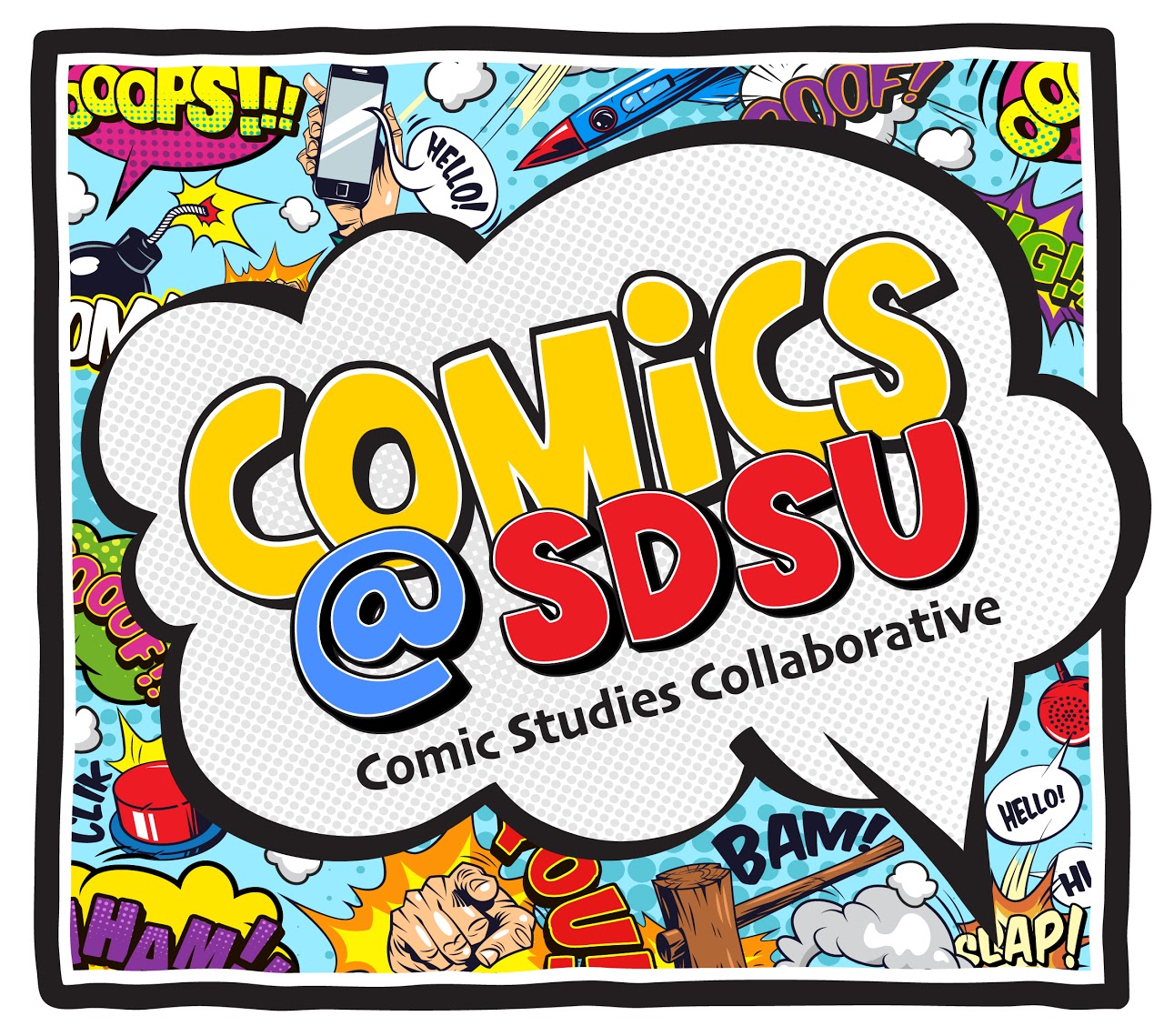Written by Luke Heine
SDSU History Major / Weber Honors College, 2021
Comics are making big waves in academia, and students are beginning to see exciting new opportunities opened to them to interact with comics in original ways. One of these avenues is through HIST 157 – Comics and History, a course dedicated to understanding what comics are, the historical role they’ve played, and the ways in which they have been used as a vehicle for examining themes of social justice. In HIST 157, students become more and more proficient at analyzing the techniques used by comics writers and artists to convey their themes in an impactful manner. And, HIST 157 students learn to produce a graphic presentation of their findings: annotated comic pages. If you’ve had the opportunity to check out Comics@SDSU on Twitter, you may have already seen some examples of these annotations created by myself and fellow student researcher Fawaz Qashat. If not, here’s an example of what these annotations look like:
Also, check out my blog “The Bayeux Tapestry – A Medieval Comics” (June 1, 2021) and Fawaz’s blog “Comics and History Annotation Process” (June 1, 2021) for more discussion about annotating comics.
Annotations such as these, however, were only a foundation for a class-wide collaboration: a timeline following social justice themes in comics across the medium’s history. To create this timeline, students found representative or significant works from the various eras of the medium (from “Stone and Thread” Age to the Modern Era), dividing up both themes and time periods among themselves. Using the knowledge about comics they had built up across ten weeks of the course, and the annotation skills they had honed, each student created a single annotation which encapsulated the key aspects of their chosen work. From there, the collaboration continued, as students submitted their creations to be brought together in a cohesive timeline. The annotations all focused on observing the depiction of specific social justice-related themes, which were grouped together on the timeline. These themes included wealth inequality, gender and sexuality, race and ethnicity, immigration, and other topics of the students’ choice. Through these students’ work, trends in the contents of comics spanning thousands of years were charted, and the past century examined in greater detail. It’s clear that the timeline is an impressive undertaking, one which sheds light on the long and storied history of comics. You can check out the completed timeline here: https://tinyurl.com/hist157-03-timeline or check out the embedded version below.
The timeline was made possible through the research materials shared with the class by Pamela Jackson (SDSU Pop Culture Librarian and Comic Arts Curator) and the timeline tutorial and work-flow set up by Dr. Pam Lach (Digital Humanities Librarian), both of whom visited with our class and collaborated with the professor to make the assignment work for the students. With collaborations like this among SDSU faculty and between CSU faculty occurring across our many campuses (see my earlier blog post, “Comics in the CSUs: Cooperation and Collaboration to Come!” April 22, 2021) and students on those campuses working together to create products of graphic history with skills and knowledge newly acquired, it is clear that a new appreciation and understanding of comics as an academic tool and scholarly medium is being reached. As a student myself who was lucky enough to have the opportunity to participate in the timeline project, I’m excited to see how this trend continues, and proud of the accomplishment we achieved as a class. As each semester passes, new students will come together to experience comics in a new and collaborative way, and create their own visual depictions of the history of comics and the themes they cover. Needless to say, go check out the timeline yourself, and see what we’ve been up to – you’re sure to see comics in a way you haven’t before.
